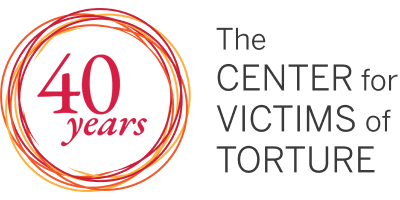When people think of torture, they often think of scars and wounds. However, torturers often use methods that are painful and create long-term injuries but which leave no scars. The use of stress positions is one of these torture methods and is commonly used by repressive regimes. These positions force a prisoner into a painful physical position, such as forced standing, awkward sitting positions or suspension of the body for prolonged periods of time. Stress positions can lead to long term or even permanent damage, including nerve, joint and circulatory damage, and muscle and joint pain.
Many CVT clients, from many countries, report their experience enduring stress positions while they were held by torturers.
And the CIA employed stress positions in its notorious torture program after the attacks of 9/11. There were wide reports of use of cramped confinement.
One detainee died after being shackled to a wall and forced to sit on a cold concrete floor overnight.
There are more reports of use of stress positions in this CVT report that provides details from survivors of torture in Syria and Iraq: Reclaiming Hope, Dignity and Respect Report.
Read more here about methods of torture used intentionally to avoid leaving scars:
